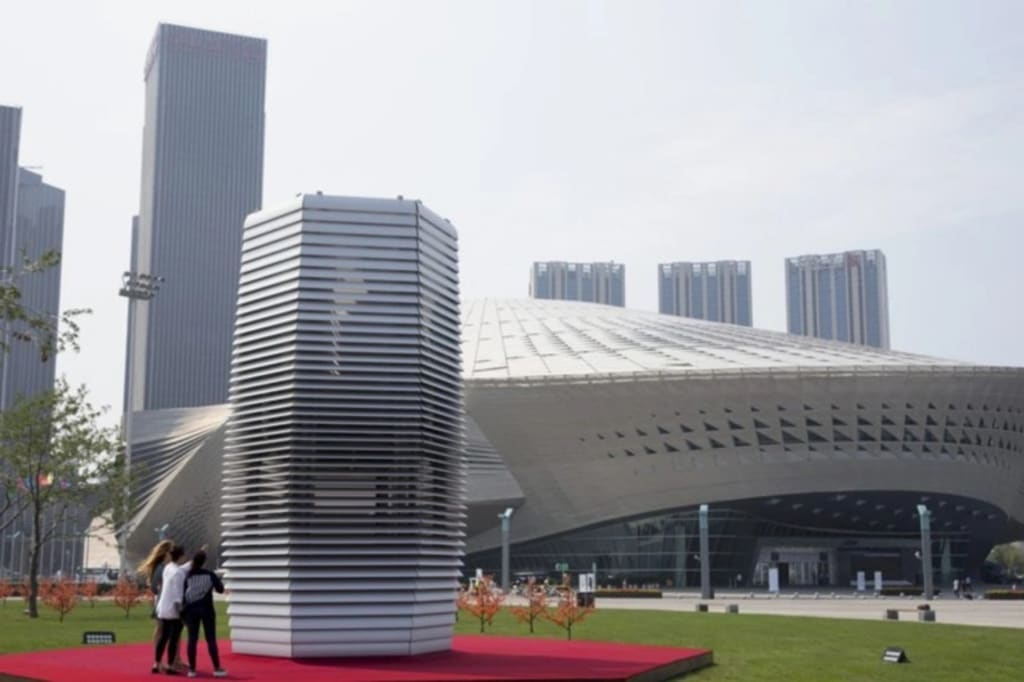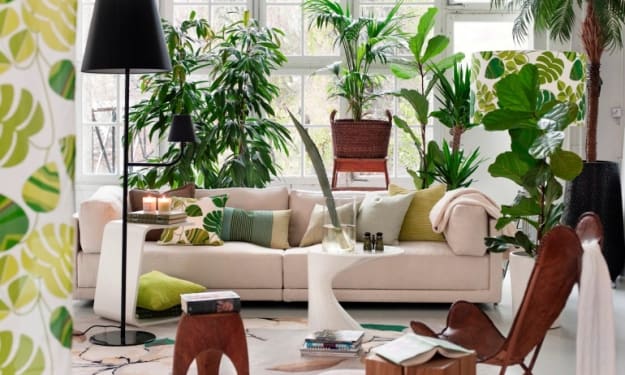Dutch Designer Turns Smog Into Jewellery
When the system allows pollution, the people who pay the price are those who want clean air.

Dan Roosegaarde is a creative thinker and social design maker who explores the relationship between people, technology and space. His fascination with nature and technology is reflected in his iconic designs. For him and his team, clean air, clean water, clean energy and clean space are their new values, and light is their language.
Rosegard's fascination with nature and technology is reflected in his iconic designs such as Waterlicht (a virtual flood that shows the power of water) and the Smog Free Project (the world's largest outdoor air purifier that makes jewellery from Smog), the "Space Waste" lab (Visualise and Recycle Space Waste) and the modern "Urban Sun" that cleans up the corona-virus in public spaces.
Creativity for the future:
Graduated from Berlage with a master's degree in architecture, Roosegaarde founded Studio Roosegaarde in 2007, where he works with his team of designers and engineers for a better future, together developing "aesthetics of the future" by building prototypes Sustainable smart cities of tomorrow.
A report published by the Believe Earth website states that 4 years ago, Roosegaarde went to Beijing, the polluted capital of China for a short visit, and from the top of a skyscraper on a cloudy day, Roosegaarde could not see the city from the window, and he remembers while sitting in the cafe His favourite is in the centre of the Chinese capital. "I felt like Beijing was trying to kill me, and that day inspired me to create a project to fight air pollution," he says.
Air purifier for open spaces:
Roosegaarde's willingness to make the case led to the creation of the Smog Free Air project, an initiative that brings together a team of scientists and designers involved in developing technologies to remove air pollutants.
The Smog-Free Air tower is the team's most famous project, a 7-meter-high air purifier installed in open spaces. The first tower was built in Beijing in 2016, and now the studio is trying to expand the model to other polluting cities around the world; Such as New Delhi in India, Medellin in Colombia, and Mexico City.
A study conducted by researchers from Eindhoven University of Technology in the Netherlands found that the tower can reduce “suspended particles” (PM) within a diameter of 20 meters from the tower by more than 45%. These particles are very fine pollution particles that can penetrate the lungs and cause The disease, which is pressed after being collected through the filter and turned into stones that are then placed on rings and sold for $ 250.
But the test conducted by the China Forum team of environmental journalists suggests that the results may be less impressive. "We disagree about the results of this test, because it was not scientific. I can't stop pollution or change the current economic model myself, but I can design Public projects that mobilise society and encourage government leaders to put sustainability back on the agenda. My role is to show that it is possible to create innovative solutions with high impact."
Roosegaarde is determined to change the current situation around the world. "When the system allows pollution, the people who pay the price are those who want clean air," he says. He believes that change will begin first in China, because of the urgent need for change in that country. "China is the future, it is an innovative country and will lead global sustainable development policies," he says. "
An Art has an effect:
Roosegaarde's latest innovation has been created by studio Roosegaarde, a portable scrubber that can be attached to millions of bikes in Beijing, starting in 2018. Although the device is still under development, the idea is that as pollution particles pass through the scrubber, fresh air returns to the casing. Atmospheric innovation could encourage people to cycle more and drive less, easing traffic jams and indirectly reducing greenhouse gas emissions.
Governments, companies interested in investing in the public interest, and donors aligned with environmental and technology issues are the main funders of Roosegaarde's projects, and during his career the artist has implemented more than 20 projects, including a dance floor that generates energy, although initially his work was more focused on technology and perceptual, however, in recent times, it has become more social, with an accompanying shift in place.
“I start my day with dreams, and I end up saying that I may not be able to handle the stressors,” says Roosegaarde. “What happens when you put pollution under stress? It turns into diamonds,” he jokes, referring to the formation of the precious stone from carbon, an apt metaphor for the Roosegaarde project. The ongoing "transformation of material that many see as a problem... into art."
For his work and creativity, Roosegaard was named Young Global Leader at the World Economic Forum and 2016 Artist of the Year in the Netherlands. (TED) and NASA.
About the Creator
Enjoyed the story? Support the Creator.
Subscribe for free to receive all their stories in your feed. You could also pledge your support or give them a one-off tip, letting them know you appreciate their work.






Comments
There are no comments for this story
Be the first to respond and start the conversation.